As arch-rivals await US approval to team up and take on Uber, BMW’s Tony Douglas says the mobility revolution is gathering pace.
Tony Douglas (below), head of brand, BMW Group Mobility Services, likes to tell anecdotes.
About his mum in his Scottish homeland who makes use of on-demand buses (a simple phone call gets her taken directly to the city rather than waiting around at a bus stop); his kids, who have a range of travel options, not just “dad’s taxi”; and about the time he drove down a narrow lane getting a “hand massage” from a rival car’s steering wheel when he couldn’t turn the lane departure warning off.
But the anecdote that may resonate most with businesses comes from his first few weeks at BMW, more than 15 years ago.
He had a meeting in downtown Munich and decided to use the city’s S-Bahn train service to get there.
He was met by his displeased boss, who bellowed: “Douglas! You’re working for a car manufacturer, next time take the car to the meeting.”
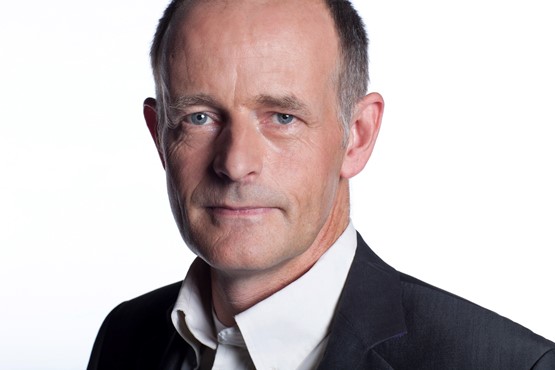
Today, no one would bat an eyelid if an employee chose to use public transport to get to a meeting. Businesses would rather staff used the ‘smartest’ mode of travel and even to question whether a face-to-face meeting is necessary or whether a tele or video conference could take place instead.
BMW Group Mobility Services would prefer you to get to the meeting using DriveNow – the brand’s flexible car-sharing service – or, if you’re in China or America, its on-demand service, ReachNow.
The merger of BMW Group and Daimler AG’s respective mobility services businesses has been approved by the European Commission but is still awaiting the greenlight by the anti-trust authorities in America.
If it gets the go ahead, Daimler’s Car2go and Moovel will be added to BMW’s car-sharing and on-demand mobility mix in Europe.
The deal will also mean combined ride hailing services, parking and electric vehicle charging.
It’s an interesting move considering BMW and Daimler have been fierce rivals for the past 100 years.
But Douglas points out that they will remain competitors in their core businesses, saying “we’re not going to work together to build cars”.
However, bringing together their mobility offerings in a 50:50 joint venture allows them to scale their businesses.
“We’re doing okay but we’re not at critical mass in the market, we’re nowhere near Uber,” he says. “That’s why both parties (BMW and Daimler) looked at each other and said ‘well, actually we could do this together, it would make a lot more sense to take us to the next level’.”
When BMW started its mobility services business eight years ago it had just five employees. Today that has grown to almost 1,000 and it has a global customer base of more than 26 million.
DriveNow operates in nine countries and has brought new customers to BMW and Mini (85% of its customer base were not in touch with the brands beforehand), while ParkNow operates in 11 countries (in the UK it is branded as Parkmobile and RingGo), and charging is in more than 100.
As well as providing access to public charging through ChargeNow, BMW Mobility Services provides charging and energy management solutions to other OEMS (it set up a separate legal business, Digital Charging Solutions, to do this).
Fleet customers are mainly served through Alphabet’s corporate car sharing service, AlphaCity, although DriveNow does have business customers.
Being in mobility services is a logical progression for BMW. Douglas says the brand started in the “owning economy” (the “business of selling cars for cash”), got into the “financing economy” with the launch of BMW Financial Services in 1971, and is now heading to the “on-demand economy”.
The latter is attractive because it’s no longer about selling “one customer one car”. Instead, “you’re basically selling one car a thousand times”, he says.
While major corporates won’t move away entirely from providing one company car to one driver, Douglas believes the next generation of employees will demand choice, particularly in urban areas.
He points out that there are already international companies which give employees a ‘mobility budget’ instead of a company car or a cash allowance.
Alphabet has customers in the Netherlands, for example, who give employees a set amount per month to lease a car or to use public transport.
That’s due to the Netherlands having joined-up public transport infrastructure and “a real congestion issue”, Douglas says.
“If you’ve got that kind of pain on the roads, you’re pretty keen to find solutions and to drive change and, this sounds simple and it’s not, you either need a very strong vision or the pain is high enough. If the pain is high enough, people will change.”
He adds: “I always thought London was going to go through enough pain, but somehow it keeps on going...”
Cities, Douglas says, are concerned with “increasing throughput” because “if you can’t move around the city, the city slowly dies. No one comes there, lives there or invests there”.
That is intrinsically linked to air quality.
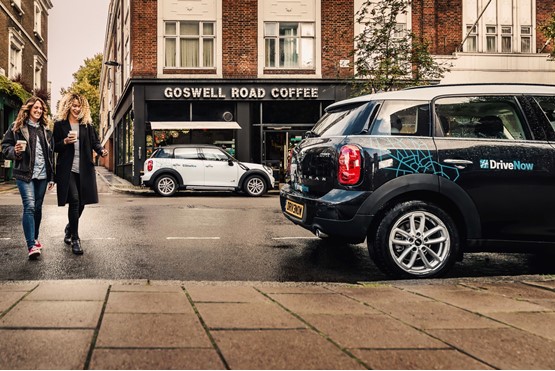
“Sustainability is a big issue and it’s always been underestimated,” Douglas says. “If you cannot breathe air in the city it’s just not the place to be and I think it’s correct that the authorities are clamping down on the air quality issue.
“People are talking about electric mobility, but it’s all about clean air, to be honest.”
Oxford has already proposed a ‘zero emission zone’ in its city centre, starting with some vehicle types and a small number of streets in 2020, and expanding to all vehicle types across the whole city centre in 2035, and Douglas believes others will follow.
DriveNow has experienced the push for electric vehicles (EVs) from cities.
“If I didn’t have electric cars on the fleet no city would let me in to operate my business,” Douglas says.
“In Milan in Italy they said from day one ‘no diesels’. That was a number of years ago and it was an early warning sign.”
Currently, 15% of the DriveNow fleet of more than 6,000 vehicles is electric. In Copenhagen alone it put in 350 BMW i3s “overnight”, which “changed the whole landscape of that city”, Douglas says.
BMW could make the DriveNow fleet 100% electric now “if we wanted to burn lots of money”.
“The only way to do this stuff sustainably is to make money out of it,” Douglas says. “We can’t just play the good guy and finance a whole bunch of it and then go bust.
"No one gains from that so it’s trying to get a sustainable offering as soon as possible. We fleet in as many as we can as soon as we can.”
He adds: “When we get the next generation out, when the cars can be driven four or five times longer than they are now, that would help a lot.”
Working with city authorities, particularly the London boroughs, involves “talking, talking, talking”, according to Douglas.
BMW has a team called the Center of Competence Urban Mobility which meets with city representatives.
“Basically, we try to set up public-private partnerships with the city,” Douglas says.
“We say ‘we’re quite prepared to invest upfront to bring electric cars into your city, if you can guarantee you will accelerate your building and roll out of electrical charging infrastructure and re-dedicate parking towards shared fleets’.”
The challenge, Douglas says, is that “every city is individual for good reasons” and you “can’t control the process in the same way as building a car”.
“In Germany we actually had to change the law in order to take a parking permit away from a resident and put car sharing or on-demand fleet into that parking space,” he says. “That shows you the issues you have to deal with.”
In London, DriveNow recently had a breakthrough with five boroughs – Barnet, Brent, Southwark, Tower Hamlets and Westminster– granting it an operating licence.
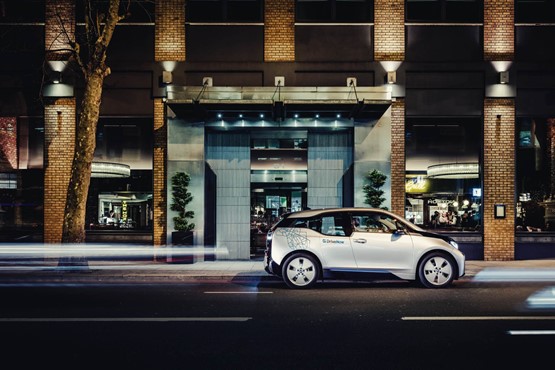
This will see the fleet grow by another 410 vehicles to 720 in total and extend DriveNow to nine boroughs (the others are Hackney, Haringey, Islington, and Waltham Forest).
Eighty i3s will join the fleet in January (in addition to the 50 EVs already on the fleet).
BMW benefits from having EVs in use with DriveNow as it is a way to do market research and to accelerate their awareness.
As Douglas points out “it’s not your typical 20-minute test drive round the block”.
It can work for dealers too. In Berlin, for example, when a customer brings their car in for an MOT or service they are given free minutes for on-demand mobility, allowing them to experience electric vehicles without “the hard sell”.
Douglas admits that when DriveNow launched it was “too cheap” and it is now positioned as ‘premium mobility’.
“We upped the price and there was hardly any impact on the business,” he says.
“You’ve got to position this as a lifestyle choice and not a utility. We’d always try to position ourselves as being a slightly premium offering, that is what BMW Group has always been doing, we play to our strengths.”
Autonomous cars: the race to ‘build a driver’
The automotive industry was “a bit arrogant” when Google began its self-driving car project (now Waymo), and people laughed at “the ‘egg thing’ that was driving round the West Coast of the USA”, according to Tony Douglas.
“But Google wasn’t building a car, it was building a driver, and that is a lot harder,” he says. “It’s the Space Race of our time.
"When you’ve got a driver, basically a computer, you take out up to 80% of the cost of any kind of mobility model.
"You can charge per minute, per mile or not charge at all. I can imagine saying ‘we’ll pick you up from the airport for nothing and we’ll drop you off at the restaurant or hotel’ and get a kickback from the hotel or restaurant. It’s not advertising, it’s bringing the customer to the front door.”
However, Douglas says that BMW wants to build the car and build the driver, and to also give “the real driver” the option of driving that car.
“You’re not going to get a BMW robo-taxi or robo-bus,” he says. “For our core competence and our brand promise (‘joy of driving’) that is a step too far at the moment.”
How BMW defines mobility: ‘I want’ versus ‘I need’
Tony Douglas says that mobility has two aspects: the rational ‘I need to get there’ and the emotional ‘I want to do it’.
“I’m not sure which one wins, I think you need both,” he says. “Sometimes you’re into the emotional. If I’m on holiday driving round Scotland, for example, that’s a highly emotional experience and I love it.
"I love the freedom of the roads. At other times I just need to get to work or to get to a conference and that’s not really a joyous mobility experience.”
He adds: “Business is more or less driven by ‘need’ and private is more ‘I want to’.”
Douglas on…
...Park and ride
“Park and ride is not really the solution. If you can get an on-demand (vehicle) to take you straight to your destination, drop you off and go and pick up the next passenger it can free up a lot of parking space and every city wants to reduce on-street parking.”
...Selling the car sharing concept
“The problem with the early days of car sharing was that it was positioned in the market as sharing. I personally believe it’s human nature to not want to share.
"I have a twin and from day one I did not want share. So DriveNow is not about car sharing, it’s about positioning it as a cool thing to do."
...Digitalisation and connectivity
“The big buzzword is ‘connected’. If a consumer is connected the car is connected, the parking spot is connected, the charging is connected. This allows us to do on-demand mobility.
"You wouldn’t have any users unless everyone had a smartphone in their pocket. It’s been a battle and I was there at the front line, trying to tell core business ‘you don’t need a key to open a car’.
"You can open the cars with an app and it’s totally safe and secure and people will expect that.”
…Mergers and acquisitions
“We will form joint ventures if the partner is right, we will also do M&A. Sixt was our joint venture partner with DriveNow (until this year when BMW bought Sixt out).
"We looked at Uber and Lyft, and for various reasons we didn’t invest. We bought Parkmobile and Parkmobile International.
"If you are a shareholder or have a seat on the board you get a much better understanding of how the business works and what the issues are - it’s some of the best market research you can do.
"If you do an M&A you can do the ‘A’ much quicker than you can do the ‘M’. If you’re writing the cheque out that can go quite quickly but merging all the systems, business models, people, brands and communications takes longer. But we have a masterplan I think.”


















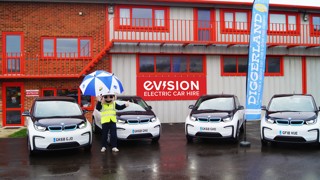
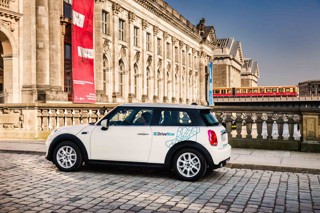
Login to comment
Comments
No comments have been made yet.